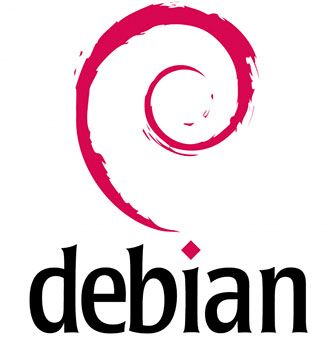How To Enable BBR on Debian 12

In the ever-evolving world of network optimization, Google’s BBR (Bottleneck Bandwidth and Round-trip propagation time) has emerged as a game-changer. For Debian 12 users looking to enhance their network performance, enabling BBR can be a significant step forward. This comprehensive guide will walk you through the process of enabling BBR on your Debian 12 system, ensuring you harness the full potential of your network capabilities.
Understanding BBR
BBR, short for Bottleneck Bandwidth and Round-trip propagation time, is a congestion control algorithm developed by Google. Unlike traditional algorithms that rely on packet loss as an indicator of network congestion, BBR uses a model-based approach. It continuously measures the network’s bandwidth and round-trip time to optimize data transmission.
The primary benefits of BBR include:
- Improved throughput, especially on high-latency networks
- Reduced bufferbloat
- Better performance in lossy network conditions
- More efficient utilization of available bandwidth
By modeling the network’s behavior, BBR can proactively adjust its sending rate, leading to smoother and more efficient data transfer. This makes it particularly effective for long-distance connections and networks with varying conditions.
Prerequisites for Enabling BBR on Debian 12
Before we dive into the process of enabling BBR, let’s ensure your system meets the necessary requirements:
- A Debian 12 (Bookworm) system
- Root or sudo access to the system
- Linux kernel version 4.9 or higher (Debian 12 typically comes with kernel 5.10 or newer)
To check your current kernel version, open a terminal and run:
uname -rIf your kernel version is 4.9 or higher, you’re good to proceed. If not, you’ll need to update your kernel first.
Checking Current Congestion Control Algorithm
Before making any changes, it’s important to know which congestion control algorithm your system is currently using. This information will help you understand the impact of switching to BBR.
To check the available congestion control algorithms, run:
sysctl net.ipv4.tcp_available_congestion_controlYou should see output similar to:
net.ipv4.tcp_available_congestion_control = cubic renoTo check the currently active algorithm, use:
sysctl net.ipv4.tcp_congestion_controlThe output will likely show:
net.ipv4.tcp_congestion_control = cubicThis indicates that CUBIC is the default algorithm on most Linux systems, including Debian 12.
Step-by-Step Guide to Enable BBR
Now that we’ve confirmed our system is ready, let’s proceed with enabling BBR on your Debian 12 system.
1. Updating the System
First, ensure your system is up to date:
sudo apt update && sudo apt upgrade -y2. Modifying sysctl.conf
Next, we need to modify the sysctl configuration to enable BBR. Open the sysctl.conf file with your preferred text editor:
sudo nano /etc/sysctl.confAdd the following lines at the end of the file:
net.core.default_qdisc=fq
net.ipv4.tcp_congestion_control=bbrThese lines tell the system to use the FQ (Fair Queue) packet scheduler and BBR as the congestion control algorithm.
3. Applying Changes
Save the file and exit the editor. To apply the changes without rebooting, run:
sudo sysctl -pThis command reloads the sysctl settings, applying your changes immediately.
4. Verifying BBR Activation
To confirm that BBR is now active, run the following command again:
sysctl net.ipv4.tcp_congestion_controlYou should now see:
net.ipv4.tcp_congestion_control = bbrAdditionally, you can check if the BBR module is loaded:
lsmod | grep bbrIf BBR is loaded, you’ll see output indicating the tcp_bbr module is in use.
Optimizing BBR Performance
While enabling BBR provides significant improvements out of the box, you can further optimize its performance for specific use cases.
Consider adding these additional parameters to your sysctl.conf file:
net.ipv4.tcp_notsent_lowat=16384
net.ipv4.tcp_slow_start_after_idle=0The first parameter helps reduce bufferbloat, while the second prevents the congestion window from shrinking during idle periods.
For high-throughput scenarios, you might also consider increasing the maximum congestion window:
net.ipv4.tcp_wmem=4096 65536 33554432
net.ipv4.tcp_rmem=4096 65536 33554432Remember to apply these changes with sudo sysctl -p after modifying the file.
Troubleshooting Common Issues
While enabling BBR is usually straightforward, you might encounter some issues. Here are solutions to common problems:
BBR Not Appearing in Available Algorithms
If BBR doesn’t show up when you check available algorithms, ensure your kernel supports it. You might need to update your kernel or compile it with BBR support.
Changes Not Taking Effect
If your changes don’t seem to be applied after running sysctl -p, try rebooting your system. Sometimes, a full restart is necessary for all changes to take effect.
Performance Issues After Enabling BBR
In rare cases, you might experience performance degradation after enabling BBR. This can happen if your network has specific characteristics that don’t align well with BBR’s model. In such cases, consider reverting to CUBIC or experimenting with BBR’s parameters.
Comparing BBR with Other Congestion Control Algorithms
Understanding how BBR compares to other algorithms can help you make informed decisions about your network configuration:
BBR vs. CUBIC
CUBIC, the default algorithm in most Linux distributions, performs well in many scenarios. However, BBR often outperforms CUBIC in high-latency or lossy networks. BBR is particularly effective at maintaining high throughput and low latency simultaneously.
BBR vs. Reno
Reno is an older algorithm that’s less aggressive than CUBIC or BBR. While it’s still used in some systems, BBR generally provides better performance, especially in modern, high-speed networks.
When to Choose BBR
BBR is particularly beneficial in the following scenarios:
- Long-distance connections with high latency
- Networks with frequent packet loss
- Situations where maintaining low latency is crucial
- High-bandwidth environments where fully utilizing available capacity is important
BBR in Different Network Environments
BBR’s performance can vary depending on the network environment:
High-Latency Networks
In networks with high latency, such as satellite internet connections, BBR often shines. It can maintain high throughput without causing excessive bufferbloat, leading to a more responsive connection.
Data Centers and Cloud Environments
In data center and cloud environments, where network conditions are often more stable, BBR can still provide benefits. It’s particularly effective in scenarios with mixed traffic types or where consistent low latency is crucial.
Congratulations! You have successfully enabled BBR. Thanks for using this tutorial to boost network performance by enabling TCP BBR on Debian 12 “Bookworm” system. For additional help or useful information, we recommend you check the official Debian website.